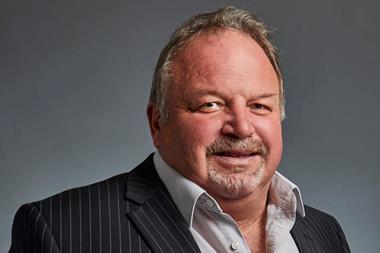At a time when a great many insurers are outsourcing previously traditional and core activities such as claims management, IT, third-party administration and other functions, there appears to be a counter-trend in the accident repair arena.
Recent attempts by Direct Line and Churchill have been followed by the purchase of repair facilities by Royal & SunAlliance. At a rumoured cost of £7m, RSA has recently purchased four sites from the Lex Group and has not ruled out the acquisition of more facilities. Norwich Union has taken a slightly different route with the formation of solus arrangements around the M25.
This phenomenon is not new. At various times since the 1960s, attempts to bring the repair function in-house have occurred with depressing regularity. Current expenditure of £6bn per year is seen as a massive potential for cost savings, in the light of recurring losses in the motor market – and the prevailing attitude among some insurers appears to be, if you can't beat them, join them.
The potential savings to be made are substantial. The repair industry averages a pre-tax profit margin of 5% per annum. Eliminate this from the total spend, and the annual savings amount to some £300m per year.
Anecdotally, although there is little objective evidence to support this view, repairers are still seen to be inefficient. Reductions of, say, 10% in the annual labour expenditure and just 5% in parts expenditure would amount to a further £240m and £135m, respectively. Add to this the projected savings from bulk buying power and ecommerce options, and the insurer community as a whole could be looking at potential savings of up to £750m per annum.
In addition to cost savings there is also the issue of capacity. After years of under investment caused by the severe squeezing of margins, there is now the genuine fear of repairer under-capacity, particularly in high cost areas of the country, such as London and the South East. Recent revolts by repairers here, and informal arrangements to raise labour rates or increase labour hours, have only underlined the argument.
So the solution would appear to be obvious. Bring the function in-house, invest the necessary cash in premises, people and technology, and all will be well. Or will it?
This whole argument presupposes that insurers are actually capable of managing the repair function in a more efficient manner than independent practitioners. Many of the supposed cost savings have not been achieved in previous experiments. So the question has to be asked: "Why would it be any different today?"
Indeed, if you eliminate the profit motive from your newly-owned subsidiary, it could easily be argued that efficiency will decrease and costs will actually rise. There is certainly no sign as yet that the much vaunted savings from ecommerce opportunities will be taken up by parts and paint manufacturers, anxious to protect existing distribution outlets and their market share.
On the other hand, retain an arbitrary profit motive in the wholly owned subsidiary, and we have a repeat of the position enjoyed by monopoly nationalised industries of the past. Who would care to argue that BT, British Airways et al were more efficient and better focused on customer service, when their source of work was guaranteed and competition was non-existent?
Overall, the undoubtedly high risk strategies of RSA and others is to be commended, as many of the positive changes needed within the repairer community will undoubtedly be driven by the new practices of these cash rich and, it is to be hoped, talent rich, enterprises.
But never believe that the complete answer lies here. In reality, the independent and franchised repairer will exist for many years to come and the insurer community will need to learn to deal with them on a professional, educated and adult level.
Nor is it possible to apply the standard principles of supply chain management, which assume that the bought in service is added to, and delivered by, the purchaser. In the case of non-owned repair facilities, it is the supplier who delivers the service to the customer and not the insurance company, even though the latter pays the bill.
Instead, new methods of remuneration and the mutual exploitation of new technology will demand a greater role from repairers in the total claims process and substantial vision from the insurer community.
After all, the cost of the repair is only one element of the claims costs. Imagine the savings that could be made if repairers were to play a more positive role in capturing third party and personal injury claims?
Bringing the repair process in-house may seem like the ideal opportunity to by-pass the repairer community and one can have sympathy with those who elect to take this route. However, the failure of past experiments does not augur well for the future.
Hosted by comedian and actor Tom Allen, 34 Gold, 23 Silver and 22 Bronze awards were handed out across an amazing 34 categories recognising brilliance and innovation right across the breadth of UK general insurance.












































